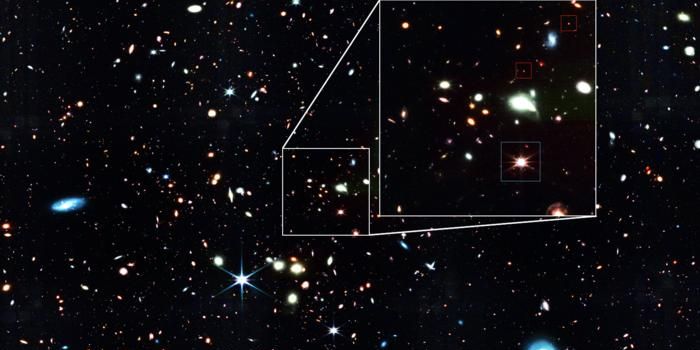in New search It was made using the James Webb Space Telescope (JWST), which was deployed in Astrophysical JournalA large team of scientists has shown that they have been able to isolate and examine a group of small red dots that we thought were ordinary galaxies. At first glance it doesn't seem like much, but it turns out that these galaxies could be home to very small quasars, which are black holes that absorb the astronomical objects surrounding them until they become some of the brightest objects in the entire universe.
Quasars are ancient but poorly understood, and these tiny quasars could help solve one of the biggest unknowns in astronomy. In an ISTA statement about the new work, Jorrit Matthay — an astrophysicist at the Austrian Institute of Science and Technology (ISTA) and lead author of the new study — summarized why the transformation of supermassive black holes into quasars poses a puzzle for scientists. “It's like looking at a five-year-old who's six feet tall,” he explains. “Something doesn't add up.”
Basically, they are too old for the age of our universe.
The cosmic time scale is long, and supermassive black holes can be thousands of light-years across. However, quasars are at the smaller end of the size category for supermassive black holes: sometimes only a few days in diameter, or about 1,000 of the Earth-Sun distance, he explains. Space.com website. However, the events that lead to the formation of quasars can last for billions of years, such as the 6 billion years expected for the complete merger of the Milky Way and Andromeda, the large spiral galaxy closest to our intergalactic forests.
The oldest visible quasar is more than 13 billion years old, meaning it was already a supermassive black hole when the universe was very young, at least according to our current knowledge of how quasars form. But right after the Big Bang, the universe was very different than it is today. It was characterized by a much simpler set of elements and much larger and more exciting phenomena.
As a result, scientists hypothesized that supermassive black holes could have formed more quickly with an enhanced physical feature of swirling gas and clouds that we no longer observe in the universe. It would be like giving a five-year-old boy the Captain America super soldier serum: of course he would be extraordinarily tall. It has a big advantage.
In this new study, researchers examined those faint red dots detected in images from the James Webb Space Telescope and found that small quasars were reddened by dust, something that goes hand in hand with the formation of galaxies and stars. This cosmic dust is composed of energetic materials and looks more like an instant collection of celestial beings than the fluff and cat hair under the sofa. These little guys fill a crucial missing link in the chain of quasars' life cycles, and should allow astronomers to better understand how these strange objects form. To extend Matthey's metaphor of “five-year-old giants,” these two-year-olds are a bit older than they actually should be.
The same redness also helps scientists date young quasars at a younger age than older, bluer quasars that have dusted themselves off. Additionally, it places it as emerging from star swirls, which do not appear red in this image.
The James Webb Space Telescope is not a specialized instrument for detecting space objects of this type, which means researchers were pleasantly surprised by the work they were able to do without needing something more precise for this particular mission. god NERCAM The telescope's power turns out to be sufficient, because its spectroscopy mode allows scientists to fine-tune specific regions of the spectrum using a focusing object called a grating.
From there, they can only notice what is red, for example. As if they used red lenses Which detects blue responses in some retro games. Even small quasars can be just a color change.
Carolyn Dilbert is a writer, avid reader, and contributing editor for Pop Mech. She's also passionate about almost everything. Her favorite topics include nuclear energy, cosmology, the mathematics of everyday things, and the philosophy of it all.





